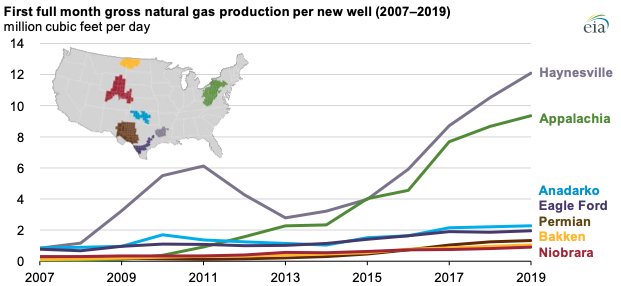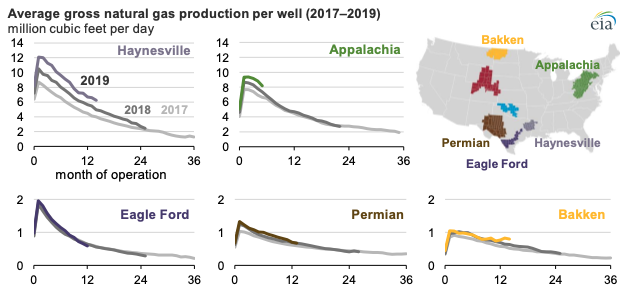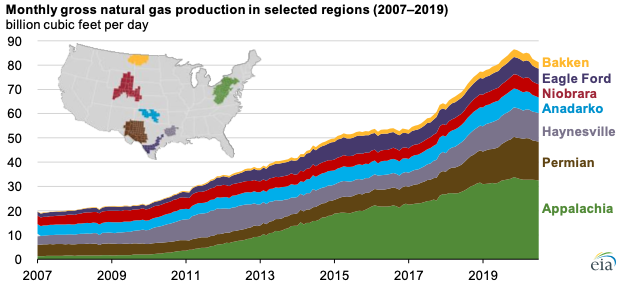U.S. natural gas production efficiency continued to improve in 2019
Jun 17, 2020The U.S. Energy Information Administration’s (EIA) latest Drilling Productivity Report (DPR) was updated on Monday, June 15. Analysis of underlying data on natural gas well efficiency shows how U.S. natural gas production increased in 2019 because, in part, of greater productivity of new wells drilled in shale and tight formations. Initial production rates for natural gas production from new wells in the DPR’s seven regions have generally increased since at least 2007.

The average new well in the Haynesville, Permian, Eagle Ford, Niobrara, and Bakken regions in 2019 produced more natural gas than wells drilled in previous years in those same regions. This trend has persisted for 13 consecutive years in all DPR regions except the Haynesville region, which had a brief productivity decline between 2013 and 2015.

More effective drilling techniques, including the increasing prevalence of hydraulic fracturing and horizontal drilling, have increased initial production rates. In particular, the injection of more proppant—sand or similar particulate material suspended in water or other fluid—during the hydraulic fracturing process and the ability to drill longer horizontal well components (also known as laterals) have improved well productivity.

Since 2007, gross natural gas production from the Appalachia and Haynesville DPR natural gas regions has grown at an average annual rate of 20%. In addition to rapid growth of natural gas production from these natural gas regions, production of associated natural gas in the Permian, Eagle Ford, Bakken, Niobrara, and Anadarko oil regions remains significant, accounting for 46% of the natural gas production from all DPR regions. Overall, associated gas production accounted for 37% of U.S. natural gas gross withdrawals in 2018.
Principal contributors: Richard Yan, Jozef Lieskovsky, Jack Perrin
Similar Stories

Today’s fuel prices / EIA January 2025
View Article
U.S. retail gasoline prices to decrease in 2025 and 2026 with lower crude oil price
View Article
Today’s diesel prices / EIA January 2025
View Article
United Airlines fourth quarter profit ahead of expectations
View Article
WorldACD Weekly Air Cargo Trends (week 2) - 2025
View Article
2024 Supply Chain Risk Trends Analysis
View ArticleGet the most up-to-date trending news!
SubscribeIndustry updates and weekly newsletter direct to your inbox!





